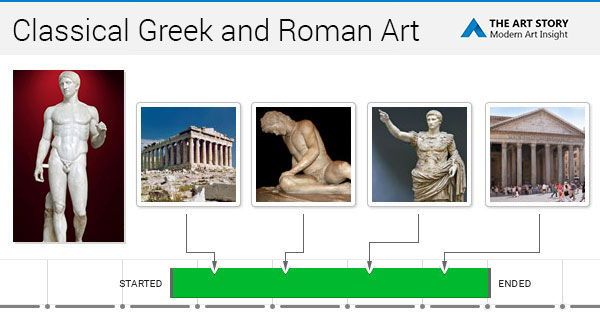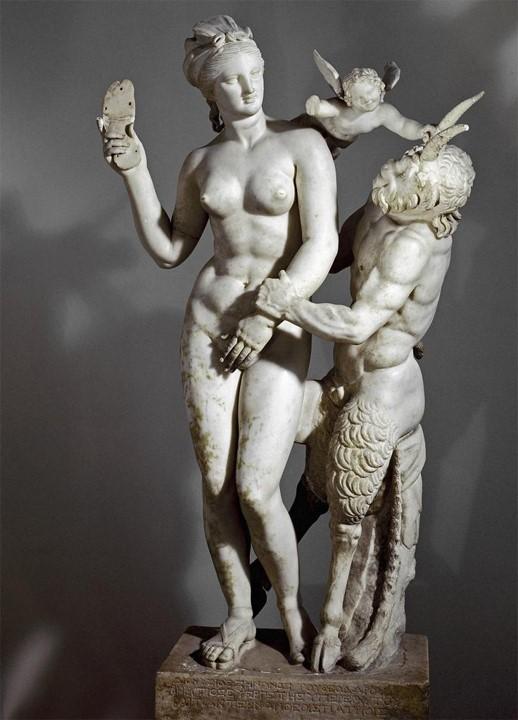classical sculpture was both naturalistic and idealistic.
3 points QUESTION 25 1. Classical greek sculptures became increasingly naturalistic and began to show the body as alive and capable of movement while maintaining an interest in portraying the ideal human anatomy Greek Architecture.

Classical Art And Architecture History Theartstory
The change from Archaic to Classical art was during the Golden Age.

. An example of this is the bust of Pericles by Kresilas. Temples and other public buildings. Indeed John Boardman describes the work of Polyclitus Fig 2 a sculptor who canonized the male athletic body in classical period art as ideally realistic Boardman 157.
Were developed in the late fifth century BCE. True or false Classical sculpture was both naturalistic and idealistic. From about 500 BC statues began to depict real people.
Classical Greek sculpture is both naturalistic and idealistic. The use of the coffer in _____ helps lighten-both visually and. After mastering the portrayal of naturalistic bodies from stone Greek sculptors began to experiment with new poses that expanded the repertoire of Greek art.
Classical Greek sculpture is both naturalistic and idealistic. Ancient Greek sculpture of the Classical period depicts beauty through the balance of naturalism and idealism. Poses became more naturalistic see the Charioteer of Delphi for an example of the transition to more naturalistic sculpture and the technical skill of Greek sculptors in depicting the human form in a variety of poses greatly increased.
The classical period characterized modifications in both the function and the style of the sculpture. Sculpture - Early classical period. Played a major role in the daily lives of the people of ancient Greece.
Classical art that emphasized rational simplicity order and restrained emotion. Art that was both Naturalistic and idealistic. Can be seen on the Temple of Athena Nike built on the Acropolis between 427 and 424 BCE.
The scientific skill of Greek sculptors in showing. In the Classical period this conflict reached an apotheosis when the two forces were balanced against each other. Were Classical sculpture both naturalistic and idealistic.
Annibale Carracci 1560-1609 influenced by Federico Barocci1526-1612 and others produced an idealistic naturalism based on Classical models and though he could depict everyday scenes with remarkable truth his world is an idealised one based on the Classical concepts of. A similar conflation can be found in the medium of classical sculpture which is both naturalistic and idealistic. Classical sculpture was both naturalistic and idealistic Government assembly halls The first Christian churches were patterned after basilicas used by he Romans as.
Art of Ancient Greeces Classical Period. Classical Greek figures appear more relaxed than the rigid formal Egyptian and early Greek sculptural poses because _____. The sculptures of this later period are moving away from the Classical characteristics they.
The Greeks and Romans both represented gods and rulers in the form of statues a combination of religious and political influence. The sculptures were generally polychrome except for works made in bronze. Classical Greek sculptors were more imaginative because the Enlightenment released them from the dogma of the pharoahs.
For details of art movements. By signing up youll get thousands of step-by-step. Poses seemed more naturalistic as shown by the Polykleitos of Diadumenos sculpture.
Defined by a careful observation of nature a new concern for the mechanics of the body and the pursuit of ideal forms Classical Greek sculpture represents a radical departure from the compact forms and upright poses of Archaic male nudes. Beautiful natural looking images of men and idealized images of Gods. Create an account to start this course today.
The Classical period saw changes in both the style and function of sculpture. Ancient Greek sculpture represents a development from idealism to naturalism. The _____ period brought more humanistic and naturalistic style with emphasis on expression and emotion.
The only materials available to the Egyptian sculptors were stones that had a very. The origin of sculpture in Greek and Roman art can almost be divided into distinct categories- classical and idealistic vs naturalistic and emotional sculpture work.